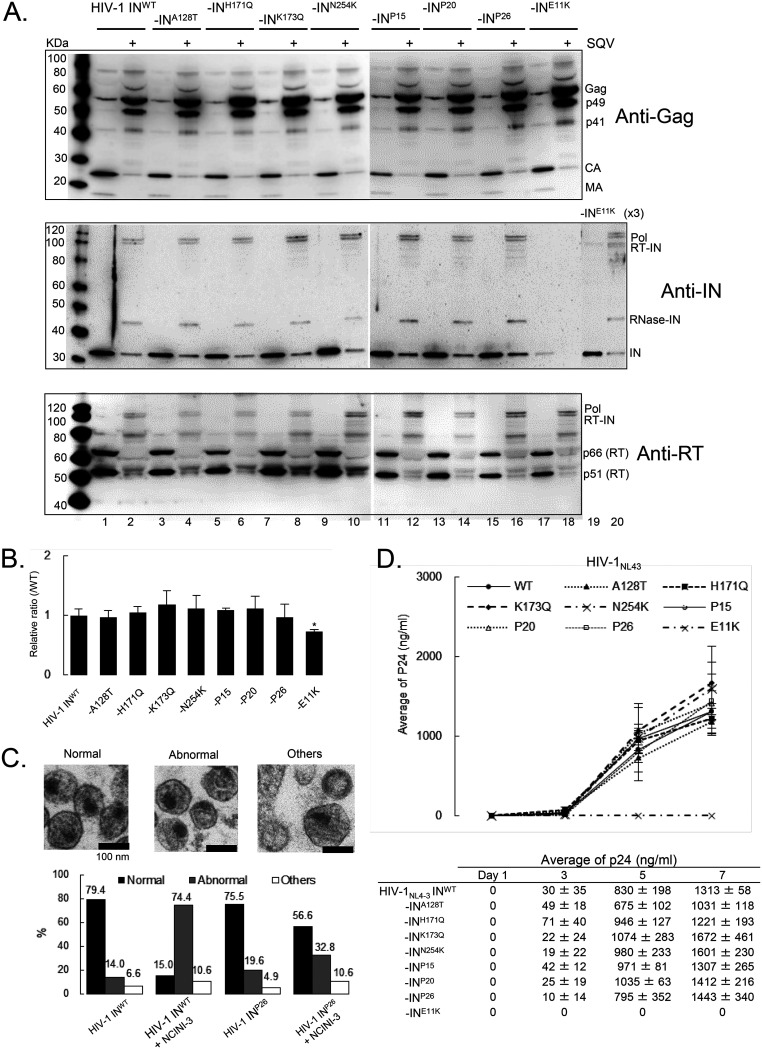FIG 3.
Characteristics of recombinant HIV-1 IN clones carrying NCINI-3 resistance mutations with IN undermultimerization. (A) Gag and Gag-Pol proteolytic processing products of recombinant HIV-1NL4-3 carrying NCINI-related mutations or INE11K clones, respectively. The HIV-1 IN clones were produced in the presence (even lanes) or absence (odd lanes) of 2 μM SQV. Gag and Gag-Pol proteolytic processing products normalized to p24 levels of each clone were visualized by immunoblotting with anti-HIV-1 Gag, IN, and reverse transcriptase (RT) antibodies. Three times the amount of INE11K (lanes 19 and 20) was examined due to the epitope of the anti-IN antibody including the E11 residue. (B) Viral production and p24 levels of HIV-1 INWT and HIV-1 clones carrying NCINI-3 resistance mutations or the E11K mutation. Data indicate relative ratios normalized to HIV-1 INWT and mean values ± SD from three independent experiments. Statistical significance was examined using two-tailed Student’s t test (*, P < 0.05). (C) Morphologies of HIV-1 INWT and the HIV-1 INP26 clone in the presence or absence of 20 μM NCINI-3 using TEM. (Top) Representative images of normal, abnormal, and other HIV-1 particles (magnification, ×168,000). (Bottom) Over 100 HIV-1 particles were examined from several images of each HIV-1 sample, and the percentages of HIV-1 morphology classified as normal, abnormal, and others are shown in a graph. (D) Replication kinetics of HIV-1 carrying the NCINI-3 resistance mutation or INE11K clones. MT-4 cells were exposed to an HIV-1 preparation normalized to p24 levels, and the production of each HIV-1 clone from MT-4 cells was monitored at days 1, 3, 5, and 7 by a p24 ELISA. The assays were performed in triplicate, and error bars indicate SD from two independent experiments.

